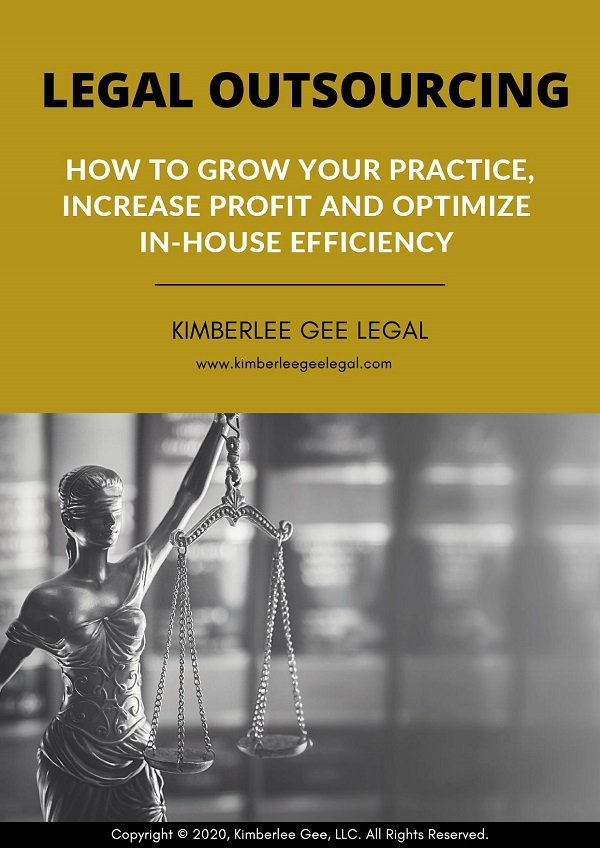Republished: NY State Bar Association, Young Lawyers Section, Electronically In Touch e-newsletter
Legal compliance is a significant part of running any business. Even if you are an attorney who is a solo practitioner or you work for a small law firm that has only a few employees, it is imperative you or your business are not intentionally or unintentionally violating any employment or labor laws.
As 2018 approaches, each of us should be paying close attention to the next wave of changes that may be on the horizon in the months ahead. Because navigating the maze of federal, state and local laws can be confusing, I’ve pulled together a list of the top 5 current employment law issues of which you need to be aware of in 2018.
- The Paid Sick Leave Trend Sweeping the Nation
For years, employees have been complaining about workplace flexibility and greater options for work-life balance. Although federal law does not guarantee paid time off as a fringe benefit, in 2017 there was an uptick in state and local laws mandating paid sick leave and paid family leave for employees. This movement will continue into 2018.
President Trump’s proposed 2018 budget includes a proposal to offer six weeks of paid leave for parental care. See Bloomberg Law, “6 Weeks of Paid Leave for New Parents Proposed in Trump Administration Budget” (May 31, 2107) And, on November 2, 2017, California Congresswoman Representative Mimi Walters introduced the “Workflex in the 21st Century Act (H.R. 4219)” which would allow employers that choose to provide their employees paid time off and a flex schedule an exemption from the local and state paid leave laws. See H.R. 4219 – Workflex in the 21st Century Act.
If you live in New York City, there is already a law in place that requires employers with five or more employees to provide paid sick leave. See Earned Sick Time Act, Int 0097-2010, Law No. 2013/046
In 2018, these laws are being expanded. A new bill was signed into law by Mayor DeBlasio on November 6, 2017 and enlarges the covered reasons for which paid sick leave can be used to include “safe time” use. “Safe time” is time used for the employee or the employee’s family member when he or she is a victim of a family offense matter, sexual offense, stalking, or human trafficking. The law goes into effect on May 5, 2018. See Int. No. 1313-2016, Law No. 2017/199
Beginning January 2018, the New York Paid Leave Benefits Law will also permit most employees in New York to take paid family leave to care for a new child, or a close relative with a severe health condition, or attend to specific military family. See “New York State Paid Leave: Employer Facts” The amount of leave and pay will phase in throughout four years. Starting in 2018 employees will receive eight weeks of leave at 50% of the worker’s 2018 salary. Id.
- Immigration Enforcement and the Implications of Terminating DACA
Although some employers may believe they are exempt because of the size of their business or the nature of their practice, all employers, in some way, are impacted by the immigration laws in our country.
Since 1986, the Immigration Reform and Control Act requires that all employers, regardless of size, verify the employment status of their employees by completing an “I-9” form. This federal law makes it illegal to hire, recruit or refer for employment a person it knows is an illegal alien. Although it is your responsibility to verify that all of your employees are authorized to work in the United States and to engage in recordkeeping that documents their employment status, do not become overzealous in your approach, as this could subject you to a lawsuit.
It is important to remember that although an employer must obey immigration laws, it is illegal to engage in document abuse by requesting more or different information than what is required by the I-9 or refusing to accept documents that seem genuine or are close to expiring. It is also illegal for an employer to use a worker’s immigration status against him or her for attempting to join a union or for talking with co-workers or union officials about working conditions. See “Immigrant Employee Rights Under the National Labor Relations Act”
Regardless of immigration status, immigrant employees have the same rights under the NLRA as all other covered employees. The NLRB may take legal action against you if there is sufficient evidence that you are using an employee’s immigration status to threaten or retaliate against an employee because he or she exercised their rights under the NLRA.
In addition to avoiding allegations of discrimination, employers should pay particular attention in 2018 to several potential developments at the federal level regarding changes in immigration laws and enforcement. Everyone is familiar with the Deferred Action for Childhood Arrival (“DACA”) program which is set to end in March 2018. Some may wonder what effect the elimination of DACA might have in the employment sphere, but the expected impact is substantial. For those individuals who are not able to renew their DACA permits, they may lose their ability to work and could face termination by their employers. These massive, concurrent workforce gaps would put pressure on employers to fill holes in their workforce with a fairly quick turnaround. According to some studies, this could cost employers over 2 million dollars over the next two years. See CNN Money, “Trump’s DACA decision could cost thousands of jobs, study says” (August 30, 2017)
In 2018, Employers should not only expect to see greater enforcement of immigration laws that are already on the books; employers should expect new bills to be introduced and pay particular attention to the outcome of several immigration bills that have already been introduced but need to pass through the House and Senate and reach approval. For example, the “Bar Removal of Individuals who Dream and Grow Our Economy” Act (“Bridge”), the Recognizing America’s Children (RAC) Act, the Solution for Undocumented Children through Careers, Employment, Education and Defending our Nation (SUCCEED) Act, and the Reforming American Immigration for Strong Employment (“RAISE”) Act all affect immigrants who are working in this country or wish to do so through employer sponsorship.
- Anti-Harassment Training and the Effect of #MeToo Legislation
Many small business owners who do not have a large staff are under the mistaken belief that the Federal discrimination laws do not apply to them and that they do not need policies or procedures addressing discrimination or harassment in the workforce.
Depending on the number of employees you have, however, one or more of the Federal anti-discrimination statutes, for instance, may apply to you. According to the Equal Employment Opportunity Commission, you are covered by the Equal Pay Act even if you have only one employee. See Small Business Requirements – Equal Employment Opportunity Commission
If you have more than 15 employees, but less than 20, you are covered by the laws that prohibit discrimination based on race, color, religion, sex (including pregnancy, sexual orientation or gender identity) national origin, disability and genetic information (including family medical history). Id. You are also covered by the law that requires employers to provide equal pay for equal work. If you have 20 or more employees, all of the laws above apply to you, and you are also prohibited from discriminating based on age as well. Id. Depending on the location of your business, you may have additional obligations under state or local laws. It is your responsibility to make sure that your company complies with the regulations at the local, state, and Federal level.
As a business owner, it is also your responsibility to display a poster at your business that describes the federal employment discrimination laws and to retain all employment records, such as applications, personnel, and payroll and benefits records.
Recently, there’s been an increase in sexual harassment incidents being brought to light. The Harvey Weinstein scandal and the #MeToo phenomenon that followed is bringing about a renewed interest in sexual harassment. Although sexual misconduct in the workforce is not a new phenomenon, we are facing a watershed period where sexual harassment and sexual abuse, particularly in the workplace, is receiving additional scrutiny, and the accused are facing additional consequences. In 2018, you can expect to see more focus on legislation designed to fight against sexual harassment, an increase in anti-harassment training and more initiatives designed to improve processes and protocols for reporting this type of behavior.
Even in New York, there is likely to be proposed legislation relating to sexual harassment in the workplace. At the end of 2017, New York State Assemblywoman Linda Rosenthal stated she had written legislation that would require companies to disclose sexual harassment complaints and settlements going back five years, and if those state businesses have a poor record of rectifying sexual harassment complaints, they would be ineligible for tax breaks or other state business incentives. See Daily News, “Manhattan assemblywoman wants to end tax breaks for companies that ignore sexual harassment complaints” (October 16, 2017)
- The Continued Expansion of the “Gig Economy” and the Misclassifying of Employees as Independent Contractors
As a solo practitioner, I often rely on independent contractors or freelancers to keep my business afloat, usually because the cost of hiring and paying full-time employees’ salary, taxes, benefits, bonuses, as well as funding training might be too substantial of a financial burden to bear. Our current labor market is overrun by short-term contracts or freelance work, as opposed to permanent, full-time jobs.
Although utilizing independent contractors as a way to keep overhead expenses low and profit margins high is understandable, an employer acts at their peril if they misclassify an employee as an independent contractor. If you have incorrectly classified a worker an independent contractor as opposed to an employee, you may be responsible for paying back taxes you never withheld, providing benefits and reimbursing the worker for wages required by the Fair Labor Standards Act. In fact, I suspect the IRS and the Department of Labor will continue to target and punish small business owners who purposely misclassify workers to avoid paying overtime, payroll taxes, and other employee-related expenses.
To side-step these mistakes, employers should pay careful attention to how employees are classified. Although independent contractor status does not have a fixed definition by all government entities, the general guiding principle in determining whether an individual is an employee or independent contractor is the degree of control the owner exercises over the person’s work. The EEOC has issued guidelines for determining if a business owner has an employment relationship with a worker, and the IRS uses a 20-factor test to determine employee/independent worker status. See EEOC, Compliance Manual, 915.003, Section 2-III(A)(1)
Once you find that an employee is an independent contractor, it may be appropriate to draft and sign an independent contractor agreement.
- Labor Laws Regarding Social Media Policies
Although 90 % of all nonpublic employees do not belong to unions and are not bound by collective bargaining agreements, it is a common-albeit misguided- belief that labor laws such as the National Labor Relations Act do not govern non-unionized workforces. This is incorrect.
Even employers that operate non-unionized workforces are subject to the requirements of the NLRA and can come under the jurisdiction of the National Labor Relations Board (the Federal tribunal that investigates unfair labor practice charges and enforces the NLRA).
Specifically, all employers should be aware of Section 7 of the NLRA and how it affects their workplace policies. Section 7 of the NLRA applies to most private employers, and permits employees to engage in concerted activity for their “mutual aid and protection.” See National Labor Relations Act, 29 U.S.C. §§ 157. These rights include the permission to discuss or attempt to improve the terms and conditions of employment, such as wages, bonuses or benefits. Section 7 also allows employees to criticize or express dissatisfaction with management actions that might affect conditions of employment. Id.
In recent years, the NLRB has found employers in violation of the NLRA pertaining to its policies and actions related to employee social media use. The NLRB has made it clear that employees have wide latitude to discuss their working conditions and the terms of their employment on social media sites, irrespective of how critical, or even derogatory such postings are of their employer. If an employee’s social media posts are related to the terms and conditions of his or her employment, the NLRB will typically consider such posts “concerted activity” under Section 7. Even if the statements made by the employee are false, it does not mean that the discipline is automatically deemed lawful. According to the NLRB, an employee can make false statements online as long as those comments are not maliciously false, i.e., the employee knew the statements were false and posted them online nonetheless. See Chipotle Services LLC d/b/a Chipotle Mexican Grill, 364 NLRB No. 72 (Aug. 18, 2016).
In 2018, employers should continue to draft social media policies that comply with the NLRA and ensure they are not over-restricting their employees’ social media use in violation of the law. The NLRB is within its right to review employee handbooks to ensure that they comply with Section 7 of the NLRA as it pertains to various policies including, email policies, employment-at-will policies, confidentiality policies, fraternization policies, and general conduct or off-duty conduct policies. An employer must ensure that their policies do not violate Section 7 and that the policy is not being applied to restrict an employee’s Section 7 rights. Employer policies must be adequately tailored, in not too broad or too narrow of a fashion, to ensure that they are addressing the employer’s business needs and goals.



